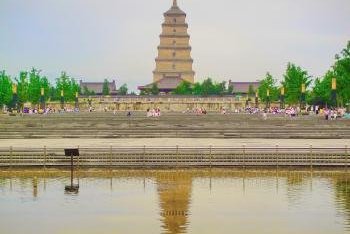Frederik Dawson 3.5
Silk Roads: Chang'an-Tianshan Corridor
Silk Roads: Chang'an-Tianshan Corridor (Inscribed)

There is something mysterious about “Silk Roads” as there are few comparable sites that can capture an adventurous heart like Silk Roads can. With the reminiscences of ancient trading caravans, exotic arts and cultures, unfamiliar architecture of faraway land in the different side of the world, stories of Marco Polo and Xuanzang, or even the classical fantasy of Journey to the West, making Silk Roads not just a World Heritage Site but as the ideal representative of global cultural exchange that should be celebrated. Since the route networks differ throughout the long history and their different roles in each regional development, I am fine with the corridor approach. Among many ancient sites I have seen along the routes in Xi’an – Luoyang which were the capitals of China from Han to Tang Dynasties, only six places have been chosen by Chinese authority, Longmen Grottoes and Dingding Gate near Luoyang, Hangu Pass in Sanmenxia, and Xi’an’s Big and Small Wild Goose Pagodas and Weiyang Palace.
For Luoyang, actually I expected that the famous White Horse Temple will be one of the selections, but thinking again that the temple actually is not quite authentic after Red Guard vandalism and the new development like Thai and Indian temples. The Han and Northern Wei ruins near the temple were not open for public yet during my visit, so I only focused on Tang and Sui part and the famous Longmen Grottoes. The Tang and Sui ruins are under the modern city of Luoyang, so even the authoritarian Chinese Government does not dare to relocate the whole city; they just built a modern museum hall and pagoda on the site that once was a Tang palace instead, so to be excluded from WHS is not a surprising matter. On the way back from Longmen Grottoes, I unknowingly visit the Dingding Gate which located next to the main road to city center. At that time, I did not know what it was as the big gate was a recent reconstruction, my friend and I even thought it was a gate to cultural amusement park or nearby botanic garden. So apart from lovely Longmen, I was quite disappointed. On the way back to Xi’an, I stopped at Sanmenxia to see the famous Hangu Pass, I was not impressed with the reconstructed gate, but it was better than Dingding, actually the nearby giant golden statue of Sage Laozi and Taoist garden were far more interesting in my idea as Hangu Pass has been considered a Taoist sacred site as Sage Laozi wrote the sacred Daodejing here.
For Xi’an, I really impressed with the magnificent city wall and grand mosque, but these two structures are Ming Dynasty works, so to be excluded is understandable. There was nothing to see at Weiyang Palace, just a group of small dirt hills. The highlight of Xi’an Silk Road sites for me is the Big Wild Goose Pagoda. The pagoda is pretty simple but amazing in its design on early Chinese adaptation of Indian Stupa like the one in Bodh Gaya. While I enjoyed the pagoda, the temple complex was horrendous with grand scale tourism development. The temple’s north plaza nightly fountains and light show was spectacular and made me feel like Paris’s Place de Chaillot and Eiffel Tower! The Small Wild Goose Pagoda, in contrast, is located in the beautiful museum temple next to modern Xi’an Museum, its fountain is the epic version of Menneken Pis; the atmosphere here was more relaxed and quieter than the Big Wild Goose Pagoda. I climbed to the top of pagoda, not a comfortable experience and the view from the top was not good. Not part of a Silk Road nomination, I really liked the Silk Road Monument in front of the small replica Kaiyuan Gate in the western side of Xi’an. Some Chinese historian designated Kaiyaun Gate, the western gate of Chang’an during Tang Dynasty, as the starting point of the Silk Road. The sandstone monument of ancient trading caravan, in my opinion, can capture the spirit of the Silk Road very well.
While I welcome Silk Roads to be inscribed as a World Heritage Site, I am afraid that the selected sites in Xi’an and Luoyang do not represent or give enough justice to the Silk Roads. Apart from Longmen Grottoes and Big and Small Wild Goose Pagodas where artistic design elements from outside China are clearly visible, I have not seen such direct cultural exchange in ruins of Weiyang Palace, Dingding Gate or Hangu Pass. These three sites may have important role in trade route and policy making, but there is nothing much left to see. Comparing with White Horse Temple and Xi’an Mosque, even though these sites have been rebuilt in later dynasties, these two sites can evoke the charm of Silk Road more than authentic Han and Tang ruins. In my opinion Silk Roads is a good concept of World Heritage Site and I would love to see other corridors in Central Asia, India or even European sites that directly represent the various cultural exchanges and development by Silk Roads to be inscribed in the future.
Comments
No comments yet.
